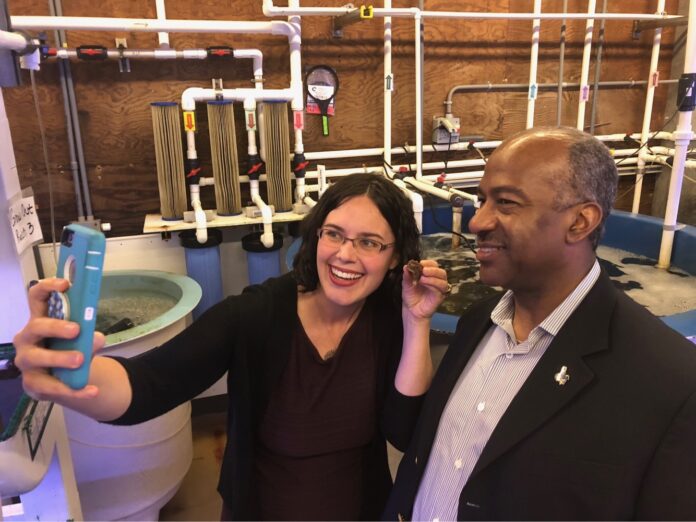The White Abalone Recovery Program reaches huge milestones in their mission to recover wild and endangered white abalone species
Last month, the White Abalone Recovery Program saw success in the form of millions of larvae.
In an effort to save the white abalone species, researchers with the UC Davis Bodega Marine Laboratory and other collaborators with the National Oceanic and Atmospheric Administration Fisheries and Fish and California Wildlife Service dedicated many years of hard work towards finding a way to cultivate the species in the lab.
Ben Walker, the former Analyst at UC Davis BML, spent five years with the White Abalone Recovery Program.
“I led the White Abalone spawning efforts, wild White Abalone larval monitoring efforts, many specific studies in the lab and wild, helped NOAA survey many areas for white abalone, lead the Section 6 grant reports and helped write the grant proposals, among many other tasks,” Walker said.
These efforts came about in response to the large decline in the number of White Abalone in the wild.
Kristin Aquilino, the director of the White Abalone Breeding Program and assistant scientist, said the wild white abalone population began to decrease substantially after being heavily fished at the start of the 1970s. As one of seven Abalone species on the coast of California, the White Abalone has the densest and most delicious meat.
“Their laziness is why they’re known as the most tender abalone to eat,” Walker said. “Since they don’t move much, compared to other abalone, their meat is very tender.”
“Because of the popularity of this tender meat, 99% of their population were fished during this time,” Aquilino said.
“Since the Abalone are broadcast spawners, the spareness of individuals in the wild makes it increasingly difficult for eggs and sperm to meet,” Aquilino said.
In order to help the species to recover, California’s commercial and recreational White Abalone fisheries closed down, the species was listed as federally endangered and the White Abalone Breeding program was initiated.
The program started in a facility in Southern California. It saw its first big success in 2001, when 100,000 larvae grew into juveniles.
When everything was seeming to be going swimmingly, the young Abalone were faced with yet another obstacle: disease.
They were hit with a disease called Withering Syndrome. The bacterium is exacerbated by warm water, which causes a lack of appetite for the white abalone, Aquilino explained.
However, the disease didn’t stop researchers from pursuing their goal of creating baby abalone. The setback just pushed them to come up with more innovative ways of increasing the survival rate of these animals.
The NOAA suggested Bodega Bay be used as a facility for the program. Use of the facility would grant the program many things: the expertise of the many scientists there and the surplus of cold, northern California waters.
“Even if the bacterium that causes Withering Syndrome is present, the Abalone won’t get the disease because the cold water prevents that from happening,” Aquilino said.
The researchers within the program worked hard to create the perfect conditions for spawning.
“The process of spawning is very romantic,” Aquilino said.
The white abalone each have their own bucket, and are given a ‘love potion’ consisting of hydrogen peroxide. This seductive concoction leads them to release their gametes.
Since the process of spawning white abalone is very complex and replicating their natural conditions in the lab has proven to be difficult, the amount of larvae the White Abalone create is much less in the lab than it is in the wild. However, with each trial the White Abalone Recovery Program produces more embryos and larvae then the last, which eventually led to the huge success of last month.
With the combination of love, fate and hard work, the last spawning effort in April was a cause for celebration. With 25 million embryos transforming into 10 million competent-to-settle larvae, it is the most success the program has seen thus far, Walker said.
“Smashing our records over and over again has been a massive treat over the years,” Walker said.
The White Abalone Recovery Program hopes to find new homes for the abalone in the ocean where they can help save kelp forests from sea urchins, maintain biodiversity and return to their position as the “zamboni of the sea floor,” Aquilino said.
Written by: Ellen Caminiti— science@theaggie.org
Editor’s note: An earlier version of this article stated that the wild white abalone population decreased substantially after heavy fishing in the 1950s. That is incorrect. It has decreased substantially since the 1970s. The Aggie regrets the error.





Now… if only they had something to eat as they grow and sustain their life after the purple urchin has decimated the ocean floor.